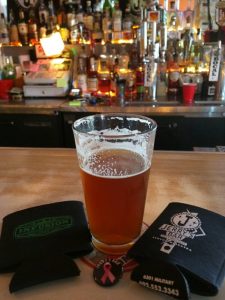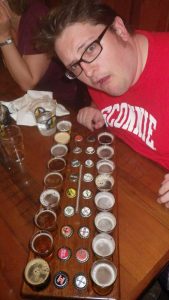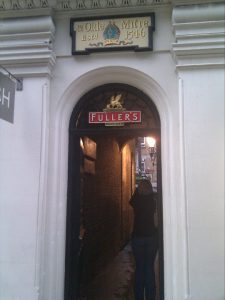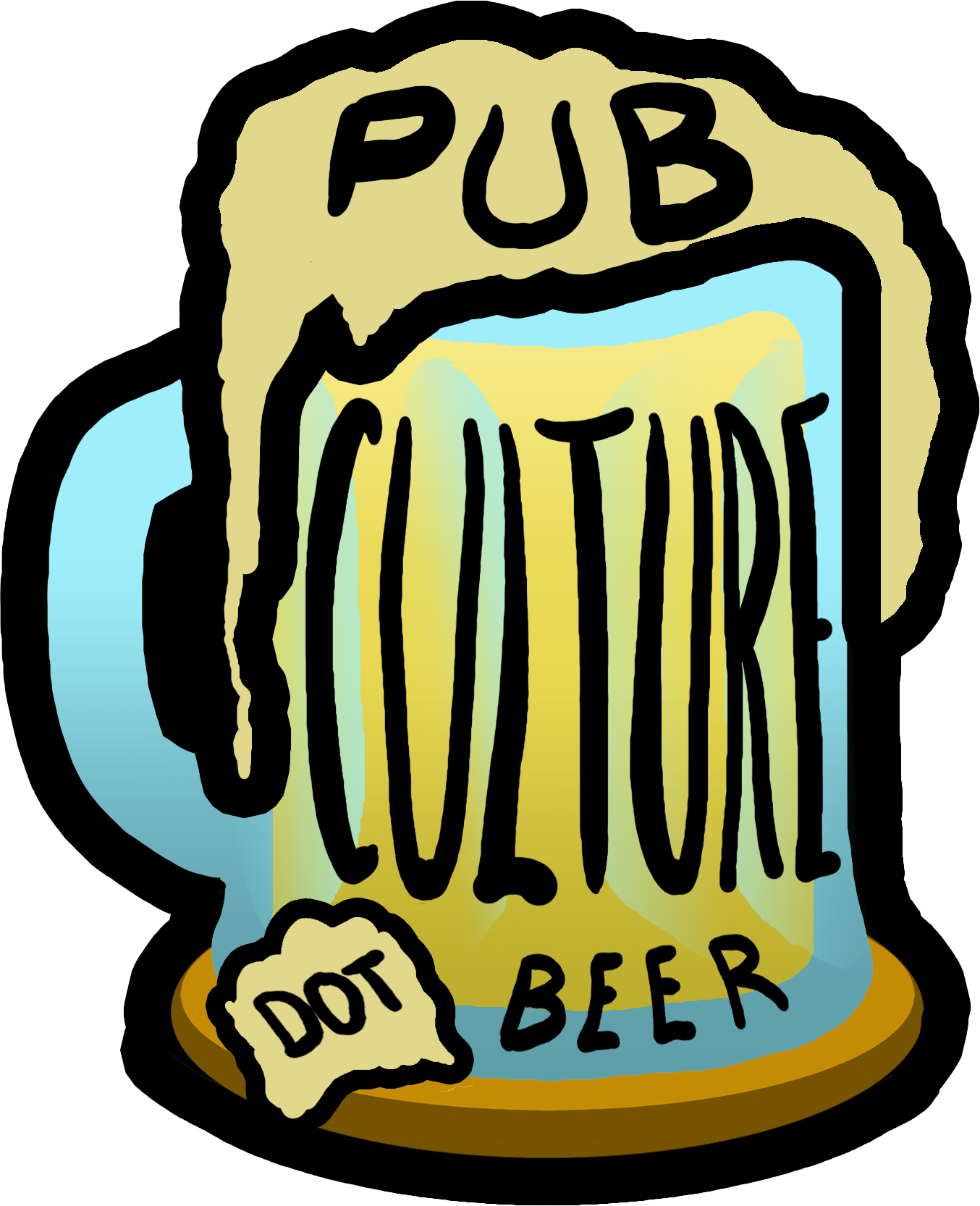Many people are intimidated by the world of craft beer. Whether a person is a long time Bud Light drinker or a fresh 21 year old eager to get started drinking ‘good beer’, it can be a pretty daunting endeavour.
Rule #1: You Can’t Drink Them All
With 3800+ different beers being served at the 2016 Great American Beer Fest alone, if you had four beers a day, it would still take you almost three years to drink them all.
And that’s just a fraction of all beers in the United States, much less the world. It’s pretty safe to say that it is humanly impossible to drink every single beer in the world. Plus with new beers coming up all the time, and leaving, how would you ever say you had them all?

Rule #2: Fear No Beer
Beer, like most of the finer things in life, is an acquired taste. Most people do not like it the first time they have it. Or even the third. It’s generally a way to get and maintain a buzz and/or a vehicle for getting drunk. Hey, I’ve been there too, I’m not judging. However, after a while, it gets to the point to where you really like it. Styles are like this as well. It took me eight different samplings over three years before I enjoyed Rauchbier. Originally I compared it to liquid raw bacon, which felt disgusting to me. Now I enjoy it on occasion. Geuze only took me three tries. Nothing like that horse blanket stank. So when you try an IPA for the first time, don’t be surprised if the amount of hops are overwhelming.

But I digress. My point is that what you like tomorrow might not be something you like today, so never turn down the opportunity to give something a try, even if you hated it previously.
Rule #3: Find A Local Beer Bar or Brewery
A good way to learn what you like is by having flights of beers. Nearby you should be able to find a decent beer bar that has a multitude of taps. Generally these places will offer 4-6 3-4oz samples of beer so you can try a bunch of different beers without having to get an entire pint on one beer. This way you can taste things, see what you like and what you don’t. Obviously this should be done when the bar isn’t packed with people as that would be rude to the server and the other patrons.

If there are multiple places near you that have this option, try them all. See which one feels most comfortable and keep going there. Become a regular, get to know the regulars. Share information. Some of my favorite beers I’ve tried on a recommendation from a drinking buddy.
Rule #4: Know Thy Styles
There are dozens of styles of beer out there in the world. There are also multiple names for each style and nobody will ever agree on a lot of them, or even if certain beers are one or the other. However, most can be traced back to the basics.
Historically there are three well established beer cultures in the world. English, German, and Belgian. America was not even considered very good as a brewing nation until the last decade or so. We will only cover some of the styles, as to build a foundation of knowledge to work on, so your favorite might be left out. Feel free to argue about it in the comments.
England and the UK
English styles (and those of the greater UK) are somewhat bland and most Americans are initially turned off by them. England, however, gives us the Beer Engine and Cask Ale, which are very important to brewing history. Some more important styles that come from here are Stout, Porter, Bitter (ESB, etc), Pale Ale and English IPA.
One of the first questions beer lovers think to ask is the difference between Stouts and Porters. Well, Porters came first. Eventually they made higher alcohol versions that were dubbed Stout Porters. Eventually the Porter got dropped off, and the Stout was born. So remember, every Stout is a Porter, but not every Porter is a Stout. These days, they are considered completely different styles because of the malts that traditionally get used during brewing. Also a grain of salt should be taken with this explanation, as there are a lot of arguments on some of this and nobody really knows the entire story, much like a lot of beer history.

German Beers
The style that most people think of when they think of German beers isn’t exactly German. But we’re including it here as it was adopted by them early on. Pilsner was born in the Czech Republic or Czechoslovakia or Czechia or whatever they call it these days. However, Bavarian (now part of Germany) brewers adopted it and the rest is history. I would recommend having a Pilsner Urquell which roughly translates to Original Pilsner, as it is the… original pilsner, brewed in Plzen, which is where the style gets it’s name.

Other good styles of German beer are Bock, usually brewed for Lent (which is why they generally show up around Springtime and Mardi Gras), Schwarz which is the German word for black, Weiss the German word for wheat, and Oktoberfest, which is also known as Marzen. Remember that Oktoberfest starts in September! Also, as a homework assignment, you should look up the German Beer Purity Law: Reinheitsgebot (or just cheat and look at wikipedia: https://en.wikipedia.org/wiki/Reinheitsgebot).
Belgian Beers
Belgium has a rich brewing history and has the most varied of styles in the world. In fact, most beers have proper glassware for each individual beer. Picking some baselines in this category is a bit challenging, but a good rundown is Wit, Dubbel, Tripel, Quadrupel, Belgian Strong, Saison, Lambic and Flemish Red.
Wit is the Dutch/Flemish word for white. These are actually wheat beers, however, distinct from German Weiss beers.
Lambic and Flemish Red usually get lumped together, along with many Saisons into a broad loose (and somewhat incorrect) category of ‘sours’. This is somewhat misleading, but seems to sum up what a lot of them have in common. Don’t let this dissuade you, however, as it’s a pretty varied group.

As far as Dubbel, Tripel and Quadrupel go, the story of their name goes back to taxes. A beer at a Dubbel strength got two XX on the barrel. A beer at Tripel strength got XXX on it. The styles kind of came from that, however they are not similar at all. This is also why you’d see old cartoon characters getting drunk off bottles with XXX on them, not because it was Tripel beer, but because that’s the rate whatever booze it was got taxed at, or it came through Amsterdam, but that’s a completely different story.
The Quad, however, is kind of a Double Dubbel. It is sometimes known as a Grand Cru, but that’s really a generic term that means the best of what someone has to offer. Again there is a lot of overlap and ambiguity in styles.
Muricuh!
Yes, there are actually some common American styles. First off, I have to mention Pumpkin. While it’s not popular (among beer geeks), it was one of the first things Americans used to brew with as pumpkins were plentiful and unique to the New World.

Pale Ale, IPA, Cream Ale, California Common/Steam are what I consider American base beers. Wait, IPA again? Yes, actually there are at least three styles of IPA in the US and they are so different from English IPA that they could be considered completely different styles. You’ll figure it out soon enough once you try a few.
Again, these are just a small few of the styles that are out there. I’d recommend having a few of each, just to get a baseline of what is out there.

Loved the guide, really. You should really post it, not just let it sit on a comment thread. Post the link and a simple title, afeter all, you deserve a little recognition!